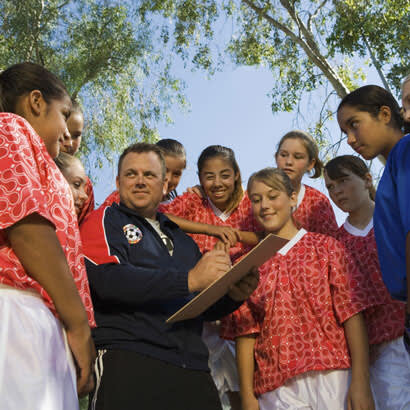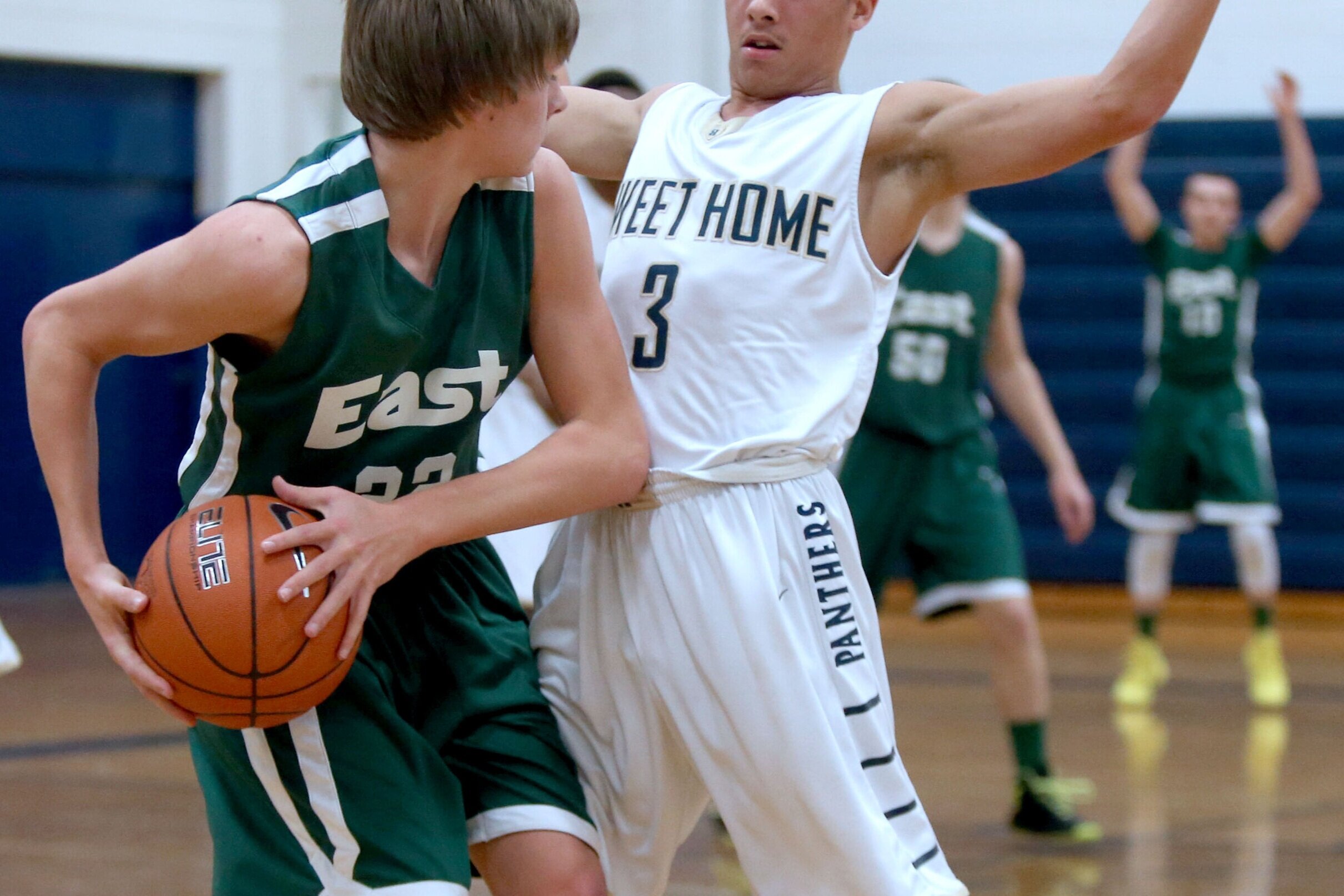About five years ago, I sought to create a youth sports model that would offer unique opportunities to parents and players of all ages and levels. One year into starting Progression Beach Volleyball in the Chicagoland area, I was frustrated with the results. I had gotten to speak with some of the titans of our sport. They always commended me on my model, but one thing was clear: If it was cutting into the margins, there wasn’t a partnership to be had.
Bryan McDermand
I felt like everything was about income vs. outcome. I was feeling alone and discouraged.
Then I met John O’Sullivan from Changing the Game Project. He had come to the Chicagoland area to do a workshop with local coaches about how to create a healthier youth sports environment. His presentation aligned with everything I believed in, but there was one big issue, so at the end of his presentation, I raised my hand.
“Everything you say is good, but how do you get all of these organizations that are really influential to change and employ this kid-centric approach? To employ these things would destroy their business model.”
John told me, “You don’t. YOU make the model that works. People are afraid of change because they’re afraid of a lack of sustainability. You may have to start out as the lone nut, but if you do it right, others will follow.”
It wasn’t an easy journey, but he was right. That night was when I stopped trying to change minds that didn’t want to be changed. It was time to find like-minded people and begin the task of reform, which is still easier said than done. People get scared to leave the norm. I see that fear of change during the coronavirus pandemic.
While I’m trying to focus on my own program with maybe 30-40 kids right now, I’m concerned about the stories that parents and players are bringing to my attention. Once Phase 4 was legal in our state with gatherings allowing up to 50 people, it’s been the same old, same old for many volleyball programs in our area. I see 90% of programs not acting on health data.
Right now, I could legally have 50 people on my two courts. We decided to stay with only four per court for now because the No. 1 priority in mitigating risk was limiting our athletes’ contact with additional people. Yet I know of one local indoor volleyball facility that still has up to 100 people inside on 12 courts. I hear of groups running 6-on-6 volleyball with 50 kids all huddled around one court. Kids are high fiving under the net. Kids are sweating and touching their face. Contact is the No. 1 concern in our sport, and it’s happening constantly.
I’ve heard of clubs that never stopped training even when the pandemic started. High school leagues have started again with spectators. Everyone is trying to make up tournaments. Some are following proper protocols; others appear not to be.
In passing, some of our kids and I discussed an adult grass volleyball tournament that recently had 500 spectators closely crowded together and with no masks. One of our kids said, “Yeah, a couple of our coaches were there.” These coaches are now working with the kids at that club.
The most egregious situation is a club that notified parents of a positive COVID-19 case on July 1, but there was no further information. A parent told me she wanted to know if their child was in the building at the same time. The club wouldn’t give up the information. They cancelled practices the first day and were back the very next day.
If these are the stories of just 40 kids, what else is happening outside of this group?
Parents and players, please hold us accountable.
I think it’s telling that the billion-dollar pro and college sports industries have been waiting to restart. I cannot help but worry about our 11- to 18-year-old kids being the guinea pigs for what happens as we restart.
Everyone is trying to pay bills, which I understand. Our facility in the Chicago suburbs was closed for 73 days. It was not comfortable. Luckily, while we had hoped to not need it, we did keep a little rainy-day money in the event that something like this happened.
But I feel that I have an obligation to reopen in a manner that doesn't have the underlying message, "Sign our waiver, and then the risks are out of our hands.” Early on, I watched all of the webinars from Project Play, Positive Coaching Alliance and health departments on how to return to play during the coronavirus pandemic. With all the uncertainty, it was important to listen to the public health experts explain where we could mitigate risks as well as where to err on the side of caution.
I learned how waivers don’t alleviate all negligence from organizations and that we are far from being in a place where we should be running tournaments. We absolutely have to be accountable that we’re following what we put in our mitigation plan. Parents and players should address it head-on if we’re not doing that.
I don’t think these other organizations are bad organizations or run by bad people. I think their business models are primarily focused on travel tournaments and hosting competitive events, and now these places with huge buildings and mortgages have to figure out how to pay their bills. It’s not an ideal situation.
It doesn’t change the reality that we don’t need to restart. We need to reset.
Everyone is talking about how to get back to what we’ve always done vs. accepting an uncomfortable truth: How do we figure out making youth sports something where people can stay in the black without compromising health? How do we get these kids back on the court while keeping them as safe as possible?
Because we have two state-of-the-art indoor beach volleyball courts, we had a lot of conversations with our state’s public health department to weigh the pros and cons of indoor vs. renting courts at a public outdoor location. I actually concluded that running lessons at our indoor courts was the safer environment.
The big advantage to outdoors is the airflow. However, we have 35-foot-high ceilings and have eight athletes utilizing a 6,000-square foot area, so the health department said that was essentially apples-to-apples to being outdoors. By being in our own facility, we also didn’t have to share the area with other organizations. We didn’t have to rely on a public bathroom that was being used for the entire outdoor area.
Above all else, the No. 1 thing I struggled with regarding being outside is when kids get heat exhaustion, a lot of those symptoms are similar to COVID-19. Another director told me that as long as a parent signs the waiver and the player shows no symptoms at the beginning of practice, you’re covered. That was not what the webinars and health department concluded, and we decided to stay inside for that reason.
“It doesn’t change the reality that we don’t need to restart. We need to reset.”
Once we were told we could reopen on June 1, the three businesses in the bay (we share it with an indoor club and strength training company) collaborated to create mitigation plans that aligned. We made sure to know how sanitation would be handled for all neutral areas like the bathrooms. There were some challenges early on, but with further conversations and minor adjustments, we’ve gotten into a pretty good rhythm. I’m thankful to share the bay with two other organizations that are aligned in their commitment to limiting risk.
Our small group lessons began and we had really good results. Our safety protocols weren’t rocket science: Temperature checks; hand sanitation first thing before entering and last thing after exiting; no contact between players; coaches wear masks; and leave 15 minutes between groups to swap out all tables, chairs and volleyballs. We eased the players back in. With each week, we added more scrimmage time at the end of practice.
We livestream the scrimmages so our parents can literally see their child’s progress and how we handle our protocols. Ever since we went to Phase 4, I’ve set up a sanitized table and chair for parents inside so they can watch since we have more than enough space to give them their own area. They have to wear a mask if they come in.
By July, the dynamic of practices changed. I have 11- to 13-year-olds with shoulder pain and knee pain. I have kids coming in saying between club, high school, college camps and my program, they’re playing six days a week. Sometimes, they’re practicing twice in the same day. It’s been less than two months and they’re already physically and mentally burning out again. It’s pretty evident the overtraining issues are happening again.
My frustration is that we have families who, if they had control of the situation, know the balance they want and how much to play now. But many of them have already paid the money and have been told they can’t get a refund, so they’re trying to get their bang for the buck.
High school coaches are keeping track of who’s showing up to “optional” workouts and who are not. Kids want to still make their high school team. Why shouldn’t a kid have a goal of making a high school team? And yet their coaches are telling them to go to these camps and programs they respect that aren’t safe. These kids and parents have an uncomfortable situation of trying to keep up with the Joneses. They watch all of their friends roll the dice, and if they don’t attend as well, they’re in a pretty tough spot.
There’s not really a Plan B for these kids. It’s the same workload as years past, if not more.
I just want the kids to have a safe environment to play. They want that too. But everyone is looking to the local directors to be the leading experts, and it seems the majority is adopting the ideas that they can’t 100% prevent the virus, so let’s do what we have to do liability-wise and get back to normal. It doesn’t have to be that way.
A crucial detail with my program’s business model is we run programming for adults, college-bound athletes who want to play three or four times a week, and kids with other hobbies and sports who can play once or twice a month on their schedule. We don’t want to put all of our eggs in the college-bound athlete basket. This gives the kids the flexibility to choose their own schedule without having to worry about making our bottom line. We also allow players to play for other organizations as they please.
This fall, we’re running a variation of our summer lessons called the Play It Safe Program. Groups of four sign up together with month-to-month scheduling for as many practices as they’d like. If they don’t have a group, we’ll try to match people. We will pair groups to do mini-tournaments and competitions in-house.
But we want parents to get to know each other and make sure everyone is comfortable with it. We have a lot of different time slots. I’m confident from what I’ve seen this summer it will be a great opportunity to provide a fun, athletic experience for the kids that’s truly as safe as we can make it – even if it’s different than what they’ve been used to up to this point.
With a little innovation, we all can offer options that are both viable for us and give the kids true ownership of their youth sports experience.
Bryan McDermand, owner of Progression Beach Volleyball, is a former college indoor volleyball player and open-level beach player. He has coached volleyball from middle school to NCAA Division I. Email Bryan at Bryan@ProgressionVolleyball.com.























